Introduction to Petroleum Geology
Disclaimer: While every reasonable effort is made to ensure that the information provided is accurate, no guarantees for the currency or accuracy of information are made. It takes several proof readings and rewrites to bring the quiz to an exceptional level. If you find an error, please contact me as soon as possible. Please indicate the question ID-Number or description because server may randomize the questions and answers.
Geology (GLGY 577-UCAL) Midterm Exam
Congratulations - you have completed Geology (GLGY 577-UCAL) Midterm Exam.
You scored %%SCORE%% out of %%TOTAL%%. With incorrect multiple tries your score is %%PERCENTAGE%%
Your performance has been rated as %%RATING%%
Question 1 |
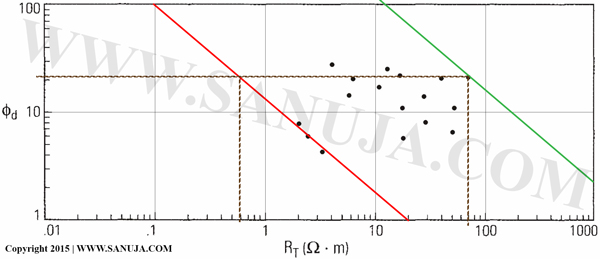
A | So maximum is the intersect point between the lower boundary (green line above) and read off the x-values straight down (first brown dash line down). The Rw is the x-value of the upper most point and read off the x-axis (second brown dash line). |
B | You cannot take these measurements from a Pickett Plot. You must use a well log to determine such properties. |
C | Rw is the intersect point between the lower boundary (green line above) and read off the x-values straight down (first brown dash line down). The So maximum is the x-value of the upper most point and read off the x-axis (second brown dash line). |
D | Rw is obtained from the upper limit of the lower boundary (red line above) and So maximum is obtained from the upper boundary (green line above). |
E | Rw is obtained from the upper boundary (green line above) and the Sw is obtained from the upper limit of the lower boundary (red line above). |
Question 2 |
A | The overall assessment of the geology may be completely wrong. |
B | The obvious features of the well logs may be ignored. |
C | The calculated net sand volume may be incorrect. |
D | The key well logs features may not be able to correlate further away from the reference wells. |
E | The topography of the area may be distorted. |
Question 3 |
A | ~ 1.2 to 1.25 m |
B | ~ 26 to 30 cm |
C | ~30 to 50 cm |
D | ~ 1.1 to 2 m |
E | ~ 1.35 to 1.75 m |
Question 4 |
A | It is easier to frack on soft sediments. |
B | It is a relatively very new technology. |
C | It may result in earthquakes. |
D | It will not affect aquifers. |
Question 5 |
A | Acids-based mud |
B | Denial-based mud |
C | Synthetic mud |
D | Oil-based mud |
Question 6 |
A | F = 0.7 |
B | F = 0.2 |
C | F = 2.2 |
D | F = 0.5 |
E | F = 0.9 |
Question 7 |
A | ...the formation is concentrated with clay minerals in saline waters. |
B | ...the formation is composed of highly complex pore structures. |
C | ...the formation is low in clay minerals. |
D | ...the formation is saturated with fresh water. |
Question 8 |
A | Top of the major formation |
B | Highest point of the hydrocarbon pool |
C | Position of the Kelly Bushing |
D | Bottom of the major formation |
E | Lowest point of the hydrocarbon pool |
Question 9 |
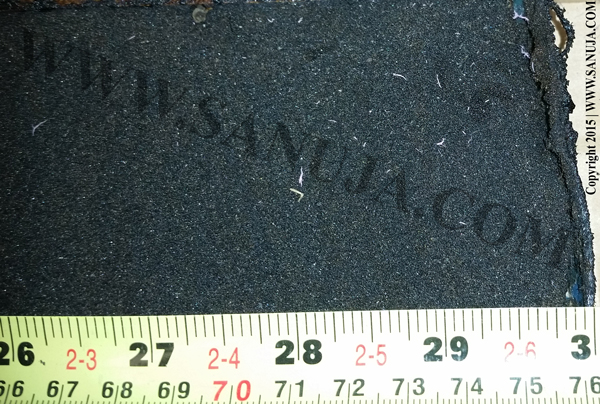
A | This part of the core is most likely saturated with organic materials. |
B | This part of the core is most likely concentrated with bitumen. |
C | This part of the core is most likely harder and stronger relative to other areas of the core. |
D | This part of the core is most likely have a very high permeability. |
E | This part of the core is most likely saturated with hydrocarbons. |
F | This part of the core is most likely have a very low permeability. |
Question 10 |
A | Point bars |
B | Beach marine |
C | Deep marine |
D | Tidal flats |
Question 11 |
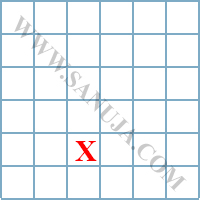
A | Section 5 |
B | Section 4 |
C | Section 3 |
D | Section 10 |
E | Section 9 |
Question 12 |
A | Increase with sand interbedding. |
B | Decrease with depth. |
C | Decrease with increase in hydrocarbon saturation. |
D | Becomes almost zero with hydrocarbon saturation. |
E | Decrease with increase in clay interbedding. |
Question 13 |
A | there are multiple sleeply dippinng beds. |
B | the beds has no dip, hence almost horizontal. |
C | the seismic signals have to travel through fluids (eg. oceanic seismic). |
D | the beds are extremly thick. |
Question 14 |
A | Gasoline |
B | Lubricating oil |
C | Kerosene |
D | Heavy gas oil |
E | Diesel fuel |
F | Residuum |
Question 15 |
A | high , low , arbitrary |
B | high , low , at 75 API |
C | low , high , at 15 API |
D | low , high , arbitrary |
E | low , high , at 75 API |
F | high , low , at 15 API |
Question 16 |
net sand = 15.5 m
shale = 5.3 m
gross thickness = 26.3 m
A | Net:Gross = 59 and Sand:Shale = 34 |
B | Net:Gross = 0.79 and Sand:Shale = 0.34 |
C | Net:Gross = 0.59 and Sand:Shale = 2.92 |
D | Net:Gross = 0.59 and Sand:Shale = 0.34 |
E | Net:Gross = 59 and Sand:Shale = 29 |
Question 17 |
A | Natural gas produced from reservoir rocks that are interbeded with alternating permeable and non-permeable layers. |
B | Natural gas produced from reservoir rocks with such low permeability that massive hydraulic fracturing is necessary to produce the well at economic rates. |
C | Natural gas produced from reservoirs that are under very high pressures making it tight and easier to extract. |
D | Natural gas produced from reservoirs after the peak production of the play. In other words, low yield gas produced after production has been in place for a period of time. |
Question 18 |
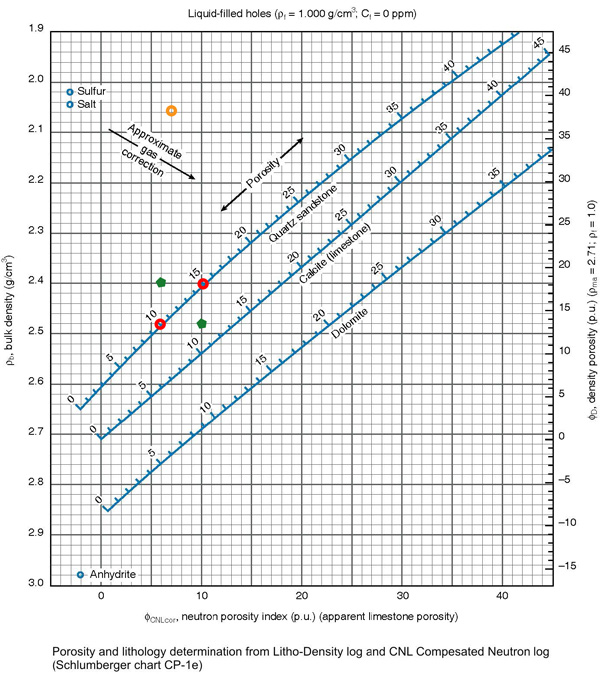
A | 6% |
B | 15% |
C | 12% |
D | 5% |
E | 10% |
Question 19 |
A | In Alberta, lens traps are the most common type of hydrocarbon traps. |
B | Typically, as you move closer to mountains, frequency of structural traps increases. |
C | Typically, as you move closer to mountains, frequency of stratigraphic traps increases. |
D | In Alberta, we commonly find oil-wet rocks in the subsurface. |
E | Computer algorithms for reservoir characterization models heavily depends on the analytical variables as opposed to empirical variables. |
Question 20 |
A | Directionally focused tools. |
B | High concentration of formation fluids. |
C | Low viscosity mud. |
D | Low mud invasion zone. |
Question 21 |
A | is highly dependent on the formation factor. |
B | is directly proportional to the resistivity. |
C | is most commonly found to be equals to 1.0. |
D | varies between 0.35 and 4.5. |
Question 22 |
A | Oil and gas acts as conduits for electrical signals. |
B | Proposity must be the same both above and below the oil-water contect. |
C | Resistivity of the formation water is same above and below the contact. |
D | Formation must be clean and free of clay. |
E | Formation is completely saturacted with fulids. |
Question 23 |
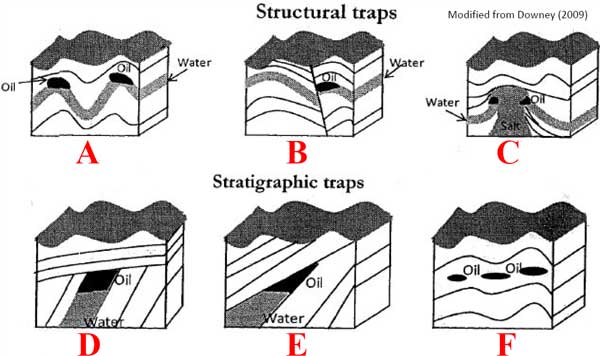
A | Pinchout trap |
B | Fault trap |
C | Salt dome trap |
D | Unconformity trap |
E | Lens trap |
F | Anticline trap |
Question 24 |
A | decarses , decrease |
B | increase , increase |
C | increases , decrease |
D | They are not related to each other. |
Question 25 |
A | 200 Hz |
B | 2 MHz |
C | 100 kHz |
D | 20 MHz |
E | 2 kHz |
Question 26 |
A | It measures the true density of the material. |
B | The thermal phase of the tool uses energy at around 10 eV |
C | It measures the slow-down length of neutrons when they interacts with atoms. |
D | A typical tool uses uranium as the energy source. |
E | Typically, silicon has a higher neutron reading than carbon. |
Question 27 |
A | The play is a large area where hydrocarbons may be found, while the prospect is an area where there is a current production in hydrocarbons. |
B | None of these answers are correct. |
C | The play is an area of interest for petroleum exploration and a prospect is the lowest point on the trap which can hold petroleum. |
D | The play is an area where common petroleum system characteristics exists, while the prospect is an area where the hydrocarbons can be extracted economically. |
E | The play is an area of interest for petroleum exploration while the prospect is an area within a play that is expected to produce hydrocarbons. |
Question 28 |
A | Progradating delta deposits |
B | Progradating marine shelf |
C | Fluvial point bar deposits |
D | Deep marine sediments |
Question 29 |
A | Production |
B | Reserves Growth |
C | Development |
D | Appraisal |
E | Exploration |
Question 30 |

A | 1.00 |
B | 1.08 |
C | 0.09 |
D | 0.65 |
E | 0.08 |
Question 31 |
A | Valleys |
B | Hills or mountains |
C | High concentration of hydrocarbons |
D | Low net pay regions |
E | High net pay regions |
Question 32 |
A | Carbohydrates and Proteins |
B | Proteins and Lignin |
C | Lignin and Carbohydrates |
D | Lignin, Carbohydrates, Proteins and Lipids |
E | Proteins and Lipids |
F | Carbohydrates, Proteins and Lipids |
Question 33 |
A | 1 - 5 m |
B | 0.5 - 1.5 m |
C | 0.8 - 1.5 m |
D | 0.5 - 2m |
E | 2 - 3 m |
Question 34 |
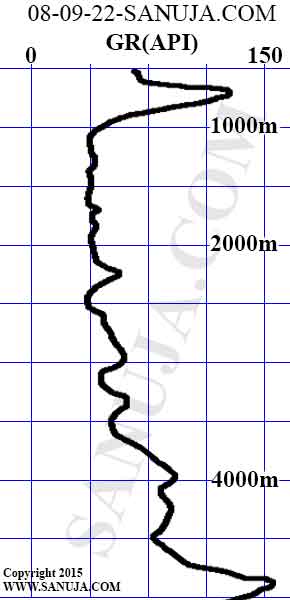
A | ~ 3.50 |
B | ~ 0.20 |
C | ~ 4.00 |
D | None of the answers are correct. |
E | ~ 0.64 |
Net sand interval = 3550 m - 1000 m = 2550 m (read off the GR curve)
Hence, net:gross = 2550 m/4000 m = 0.6375
Question 35 |
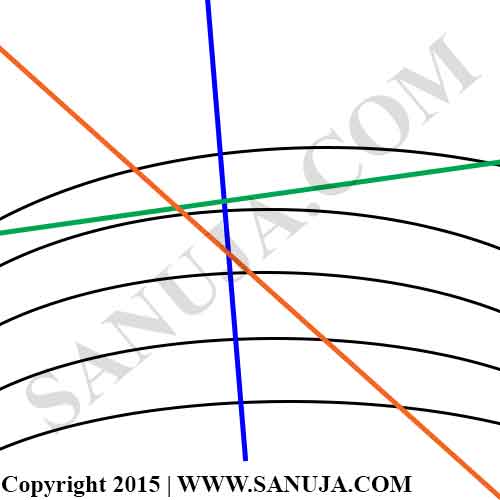
A | orange , green , blue |
B | green , blue , orange |
C | green , orange , blue |
D | blue , green , orange |
E | orange , blue , green |
F | blue , orange , green |
Question 36 |
A | Porosity and permeability of the core. |
B | Well diversion trajectory angles. |
C | Total length of the recovered core. |
D | Length of the drill string. |
Question 37 |
A | Epi-thermal phase of the scatter |
B | Thermal phase of the scatter |
C | Uranium source |
D | Electric energy |
Question 38 |

A | Coarsening downward sequence |
B | Net sand content Hint: You need the scale for this calculation. |
C | Coarsening upward sequence |
D | Very high gamma ray kick Hint: You need the scale for this interpretation. |
Question 39 |
A | It will reduce viscosity of crude oil hence allowing it to be pumped. |
B | Decrease friction between the pore walls and the crude oil. |
C | Increase the conductivity between pores. |
D | Increase pressure within the chamber hence driving the crude oil out of the system. |
E | Increase pressure within the chamber which facilitate extraction. |
Question 40 |
BHT (bottom hole temperature) = 255o F
Surface temperature = 75o F
Depth which BHT was measured: 11400 ft
A | ~ 0.016oF/ft |
B | ~ 0.029oF/ft |
C | ~ 0.015oF/ft |
D | ~ 0.018oF/ft |
E | ~ 0.028oF/ft |
Question 41 |
A | Initial burial |
B | Diagenesis |
C | Unaltered organic matter |
D | Catagenesis |
E | Zone of gas formation |
Question 42 |

A | ~ 2.81 |
B | ~ 0.20 |
C | ~ 3.50 |
D | ~ 1.76 |
E | ~ 0.71 |
Net shale interval = 5000 m - 3550 m = 1450 m (read off the GR curve)
Hence, sand:shale = 2550 m/1450 m = 1.7586...
Question 43 |
A | Dipmeter log |
B | Caliper log |
C | Sonic log |
D | Gamma ray log |
E | Neuron log |
Question 44 |
A | ~ 80 cm |
B | ~ 10 cm |
C | ~ 40 cm |
D | ~ 30 cm |
Question 45 |
A | To prevent well blowouts. |
B | To protect aquifers from contamination. |
C | To provide support for the Kelly Bushing. |
D | To reduce fractures near the neck. |
Question 46 |
A | 3D seismic data acquisition |
B | 2D seismic data acquisition |
C | 4D seismic data acquisition |
D | Crosswell seismic data acquisition |
Question 47 |
A | inorganic compounds. |
B | carbon-hydrogen bonds. |
C | transitional metals and carbons. |
D | kerogen. |
E | carbon-oxygen bonds. |
Question 48 |
A | Formation factor is inversly related to tourtousity factor. |
B | Porosity and formation factor is directly related to each other. |
C | Clean granular formations have a lower formation factor than clean carbonate formations. |
D | Pore stucture is directly related to the formation factor. |
Question 49 |
A | Gravity readings |
B | Core samples |
C | Seismic sections |
D | Geostatistical models such as kriging |
E | Wireline well logs |
Question 50 |
A | All or other things being equal, as m increases, the prore geometry become complicated. |
B | The m and porosity are directly related to each other. |
C | All or other things being equal, increase in m will result in decrease in a. |
D | All or other things being equal, increase in m will result in increase in formation factor, F. |
E | Value of m is independent of the surface area of the pores. |
Question 51 |
A | reservoir. |
B | kerogen. |
C | traps. |
D | carbon-oxygen chains. |
E | hydrocarbons. |
Question 52 |
A | Density tools |
B | Neutron tools |
C | Gamma Ray tools |
D | Resistivity tools |
Question 53 |
A | 2D seismic |
B | 4C seismic |
C | 4D seismic |
D | 3D seismic |
Question 54 |
A | ~ 3 m |
B | ~ 50 cm |
C | ~ 2.5 m |
D | ~ 80 cm |
E | ~ 1.5 m |
Question 55 |
A | 9.80 Ωm |
B | 102.0 Ωm |
C | 0.102 Ωm |
D | 120.0 Ωm |
Question 56 |
A | Calibrate the Ro line with the core or well logs. |
B | Generate several parallel Ro lines on the Pickett Plot. |
C | Generate the most two extreme Ro lines on the Pickett Plot with the maximum Rt and minimum Rt as your reference bounds. |
D | Generate several Ro lines on the Pickett Plot. |
E | Use the Ro line that is most centered to the all other Ro lines. |
Question 57 |
A | Very high permeability in the formation. |
B | Very high porosity in the formation. |
C | Very high formation pressures. |
D | Very low formation pressures. |
Question 58 |
A | Rw |
B | Ro |
C | Rmc |
D | Rt |
E | Rm |
← |
List |
→ |
| 1 | 2 | 3 | 4 | 5 |
| 6 | 7 | 8 | 9 | 10 |
| 11 | 12 | 13 | 14 | 15 |
| 16 | 17 | 18 | 19 | 20 |
| 21 | 22 | 23 | 24 | 25 |
| 26 | 27 | 28 | 29 | 30 |
| 31 | 32 | 33 | 34 | 35 |
| 36 | 37 | 38 | 39 | 40 |
| 41 | 42 | 43 | 44 | 45 |
| 46 | 47 | 48 | 49 | 50 |
| 51 | 52 | 53 | 54 | 55 |
| 56 | 57 | 58 | End |
Credits: Based on the excellent class notes provided by, Dr. Stephen M. Hubbard during Winter 2015
FAQ | Report an Error
If you get a question wrong, you can still click on the other answers. You have multiple opportunities to select the correct answer. This will open up hints and explanations (if available), which will provide additional information.
